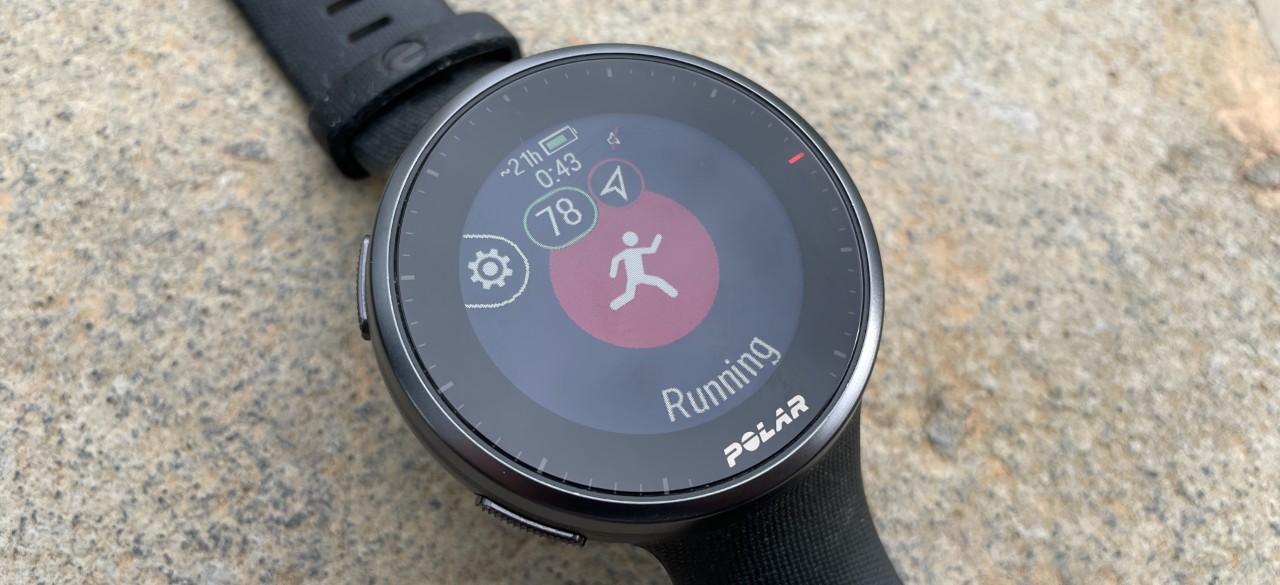Our Verdict
The Vantage V2 offers the very best of Polar to keen runners and triathletes. Its excellent tracking is backed up by a wealth of training and recovery insights, while it’s the first Polar watch to offer fitness tests for running and cycling. It all adds up to a great watch and a flagship device worthy of its title, although it faces stiff competition from watches both cheaper and more expensive.
For
- The best-looking Polar watch I’ve tested
- Core sports tracking is very good
- The Cardio Load tool is useful for tracking strain
- Detailed sleep tracking
- Unique leg recovery test
Against
- Unimpressive battery life
- Lacking smartwatch features
- The app is fairly limited
- You can only link sensors via Bluetooth, not ANT+
You can trust Coach
The V2 is a great running watch but at £450 it’s something of a tough sell, because of both the watches available for less and the features available for a little more. The Polar Grit X is £70 cheaper and has almost all the same features as the V2, with the main difference being the V2’s new fitness tests. I prefer the design of the V2, but some might prefer the chunkier, outdoorsy look of the Grit X.
Even sterner competition comes from Garmin. The Forerunner 945 has an RRP of £519.99 but is often discounted and offers some useful upgrades on the V2 like full colour maps, NFC payments and music storage. Although the GPS battery life is listed at 36 hours to the V2’s 40, with real-world use the 945 comfortably lasts a week, which is longer than the V2.
Then there is the Forerunner 745, which is the same price as the V2 and, like the 945, offers some smart features such as music storage and NFC payments. On paper the 745 has much worse battery life than the V2, but in practice it lasted longer for me during a typical training week. All the same the V2 would be a better pick for one-off long runs or cycles because the 745 offers only 16 hours of GPS battery life. The Garmins also provide impressive levels of training insight, including suggested workouts based on your ability and training load, and I still rate the overall experience as more enjoyable and easier than that of the V2.
If you don’t need the complete suite of training and recovery detail you get from flagship models, you can get excellent watches for a lot less than £449 too, such as the Forerunner 245 (£249.99, or £299.99 with music) or the Coros Apex (£299.99). If you’re just looking for the tracking essentials, the Coros Pace 2 multisport watch is a bargain at £180.
Running With The Polar Vantage V2
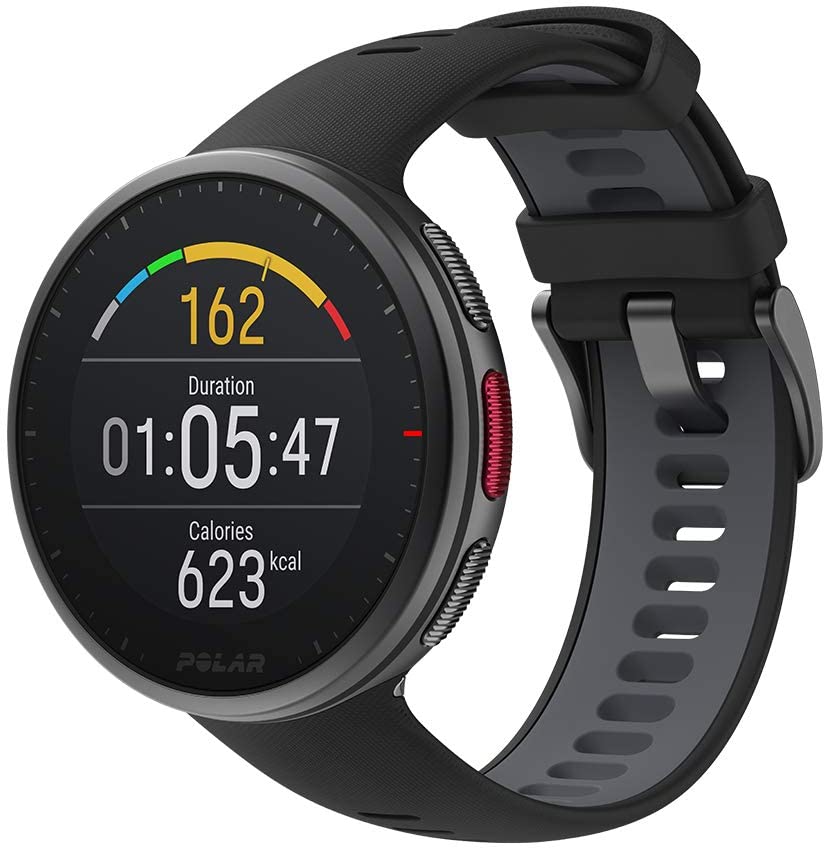
Running is my main sport and I log around 80km a week with a range of easy runs, speed and tempo sessions, and a long run. I’ve worn the V2 for a month and my experience with the watch is very positive. It’s accurate, broadly speaking, it’s easy to read when running in daylight, and it provides all the essentials I need plus the detailed Cardio Load training feedback.
It’s not perfect, and I have considerable reservations about the new running fitness test, which failed for me when I attempted it, but there’s no doubt the V2 matches the sports tracking you get from any brand’s best.
The GPS tracking has been accurate. I have occasionally seen a jump in the lap pace for a kilometre split that seems unlikely, but overall it’s matched with my expectations and other trackers I’ve used in tandem. The Polar has a tendency to come up slightly longer for distance covered, and panics when you take a dead or sharp turn that sends your lap pace all over the shop, but it usually rights itself within a few hundred metres.
However, the current pace reading is not accurate enough for the new running performance test. This involves walking and then running at a progressively quicker pace until you max out and can’t keep up with the rising pace anymore (a sub-maximal test is also available, where you reach 85% of your max heart rate then stop). Based on the pace and heart rate at that pace, you’re given a wealth of useful stats like your VO2 max, maximum aerobic pace, and data you can use to personalise your heart rate and power zones.
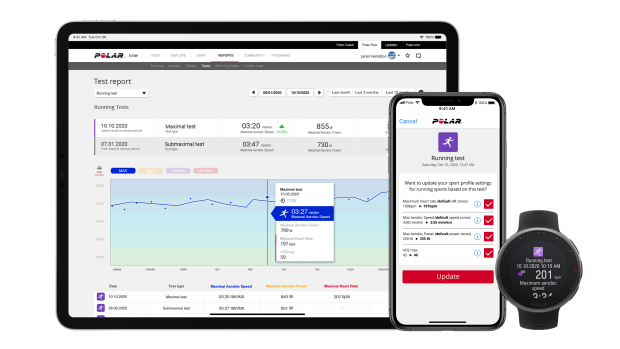
You are given a little grace when it comes to hitting the target pace shown on the watch – if you’re too fast or slow it will buzz at you and if you get back on track then things can continue as planned, but if you’re off target for too long the test ends. If you’ve reached at least 85% of your max heart rate you’ll get results, but if not, the test will fail and you have to start again.
The first time it failed for me was because I was going too fast in the early stages, when the target pace was really slow. That’s not a big deal and it was my fault. The second time I’d been walking and then running for 20 minutes and the watch simply couldn’t get an accurate fix on my current pace. As I ran faster I could see the reading of current pace jumping around more and more, and at 3min 10sec/km pace, which is my 5K pace, the jumps were so large – both above and below that target – that the watch ended the test and I didn’t get a result.
This was infuriating. Having committed the time to find a nice clear, straight bit of road for the test, and setting aside a run from my training programme to do it, I was annoyed enough to not bother again. Anyone who has used GPS watches will know that current pace is rarely an accurate metric, and to base the test on this is asking for trouble, especially at high paces.
The heart rate accuracy was also unimpressive. The V2 often failed to recognise when I pushed beyond zones two and three, returning quite a low reading instead. I would strongly advise using a chest strap with the watch, because that heart rate data feeds into the many training and recovery advice features, so you want it to be as accurate as possible.
Your training load is broken down on the watch and in the Polar Flow app to show the current strain you’re putting your body under and the tolerance you’ve built up. If you put a lot more strain on your body than Polar estimates you can tolerate, you’ll be marked as overreaching and risking injury. If you’re building your fitness you’re marked as productive.
It took a month of running for the V2 to get to grips with my tolerance, with the Polar Flow app, website and the V2 itself disagreeing on whether I was productive or overreaching until then. However, the watch seems to know me well enough now that the advice is more useful when it comes to judging my training load.
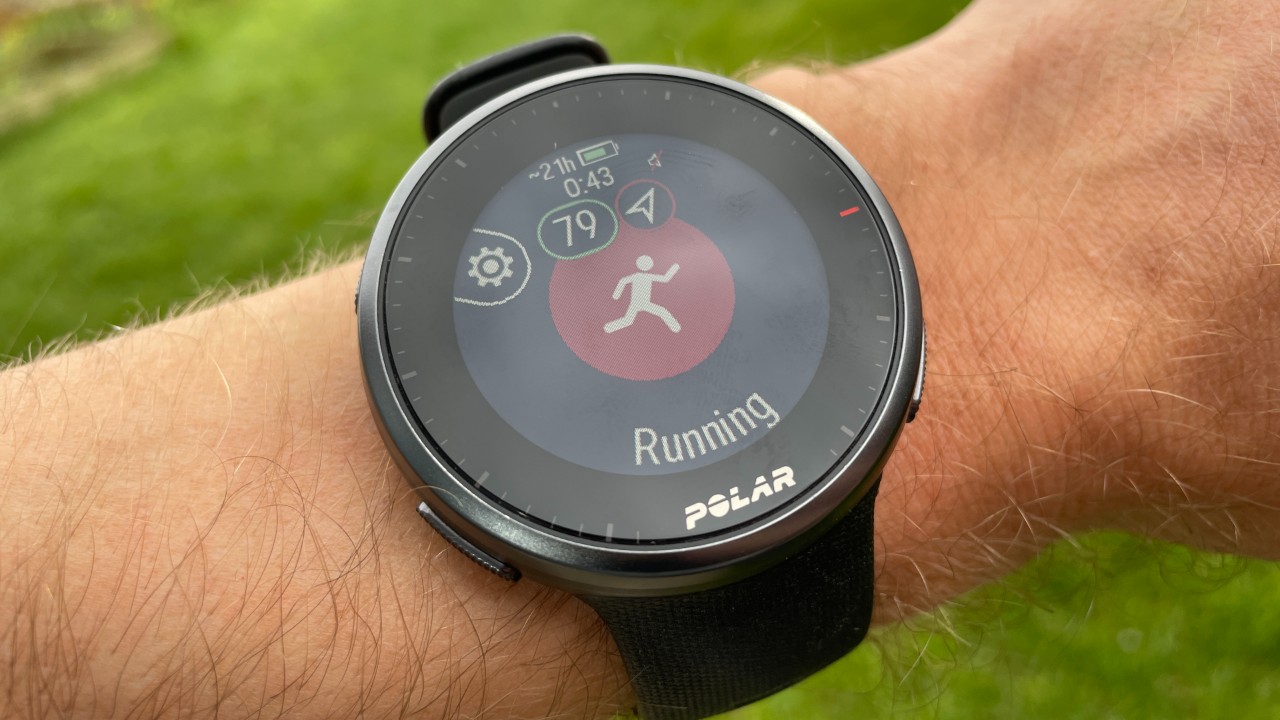
You can set up structured workouts to follow on the V2, with targets based on heart rate or speed. This process is quite laborious and I found I had to do it on the Polar Flow website because the workout tool in the app is basic – it wouldn’t allow more than 10 intervals, for example. If you want to set pace targets you also have to use the speed zones you set up for your Polar account, rather than just set a target. If you’re using heart rate the workouts are fine, but I tend to use pace for my workouts and found hitting manual laps was much easier than setting them up. This whole process is far easier on Garmin and Coros devices.
There are also suggested workouts on the V2 each day, including cardio options based on heart rate. The suggestions take into account your fitness and recovery status, informed by the watch’s tracking of your sleep. The workouts are solid but a little basic, and Garmin’s recently-introduced suggested workout feature seems a little smarter to me, with pace targets given and a greater range of suggestions that are closely tailored to the training load measurements the watch has taken.
The V2 also gets the new features introduced on the Grit X that aren’t on the Vantage V, namely FuelWise, Hill Splitter and breadcrumb navigation with turn-by-turn instructions through a partnership with Komoot.
The navigation feature is fine, though no better than what you find on cheaper watches like the Forerunner 245 or Coros Apex, and well short of the full maps you get on Garmin’s flagship Forerunner 945 and Fenix 6 Pro watches. You also can’t create routes in the Polar app and send them to the watch, which you can do with the Garmin Connect app – you have to use the website.
Hill Splitter is a bit of a dud – it automatically records the uphill and downhill parts of your run so you can analyse them later, but mid-run detail is scarce. The tracking often missed hills in my experience, and even when it clocked an incline I rarely found any of the data recorded useful.
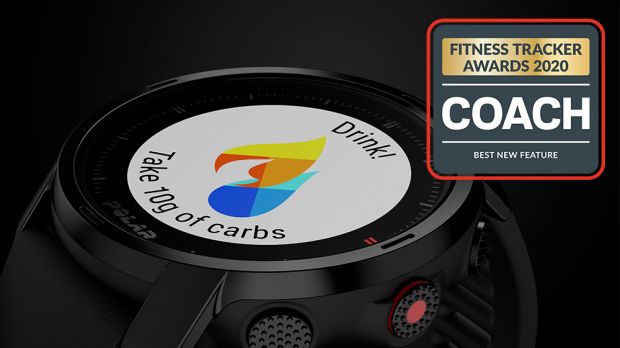
FuelWise is great, though. You can set up your nutrition strategy for any exercise session longer than 90 minutes, and the V2 will buzz at you to remind you to take carbs on board depending on how hard you’ve worked. So if the session is easier than expected the reminders will come less frequently, while they’ll come more regularly if you’re really pushing it. If you’ve struggled with sticking to your nutrition strategy when your mind becomes fuzzy in the latter stages of a marathon, this feature could make a world of difference.
Despite some wrinkles the V2 is a watch I’d happily use as a very keen runner, and if you’re really taken with Polar’s approach to training load management and workouts based on heart rate or power, then it’s as good as anything out there. I personally find Garmin’s watches easier to use and more in line with my preferences, especially when it comes to structured workouts. The V2 is also missing some of the features on the most expensive Garmins, like the full maps on the Forerunner 945 and Fenix 6 Pro, and the music storage and streaming on those watches as well as the 745 and 245.
Sports Tracking With The Polar Vantage V2
The V2 is a full triathlon watch that offers a wide variety of sports modes. These will all feed into your overall training load measurements, and the Fitspark feature recommends both strength and supportive mobility and stretching sessions alongside cardio workouts each day.
Like runners, cyclists get a fitness test. In this case it’s a functional threshold power test that you can choose to do over 20, 30, 40 or 60 minutes and requires an external power meter. You can connect this only over Bluetooth, since the V2 doesn’t include ANT+ connectivity.
The other new test on the watch is a leg recovery test, where you perform three standing jumps and the watch measures how high you get and estimates how well recovered your leg muscles are. Of the new tests this is the most useful. It’s quick and easy to do, and providing you jump with equal gusto each time, it gives a fairly reliable indication of your recovery – which is all in stark contrast to the tricky, time-consuming and less reliable cycling and running tests.
I haven’t been able to get into the water with the V2 yet, but it offers all the expected stats swimmers need, including SWOLF, automatic stroke recognition and lap tracking in the pool, while you’ll get GPS distance and tracks for open-water swims.
Activity Tracking With The Polar Vantage V2
The V2 will track your steps, calories and active time each day and put them towards an overall activity goal, which is shown in percentage terms on the watch face. The goal can be set to one of three levels, of which one is the lowest and is suited to mostly sedentary people looking to hit a basic level of activity each day. The third level requires a lot of activity to hit the goal, and is suited to people doing a decent amount of reasonably intense exercise each day. For example, I’d hit the goal on days when I ran, but right now it’s at 50% although I’ve done an hour-long walk and taken 12,000 steps in total.
Using The Polar Vantage V2 As A Smartwatch
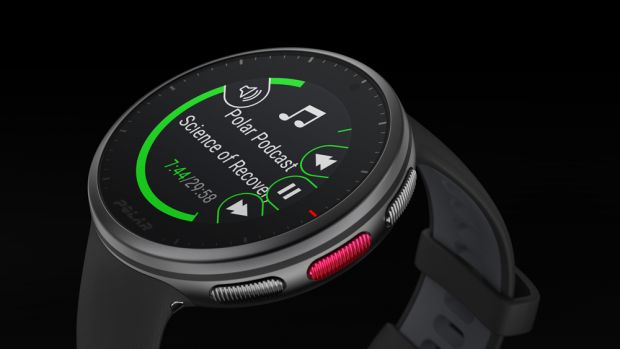
Unlike Garmin, which has taken steps to make its sports watches smart through the addition of music, NFC payments and an expansion of the (still limited) Connect IQ app store, Polar has done little on this front.
The V2 is the company’s smartest watch ever, in that it has music controls, but this is a very common feature on watches now. It also has weather information and will show your phone’s notifications, but if you’re looking for a sports watch with real smarts, this isn’t it.
Sleep Tracking With The Polar Vantage V2
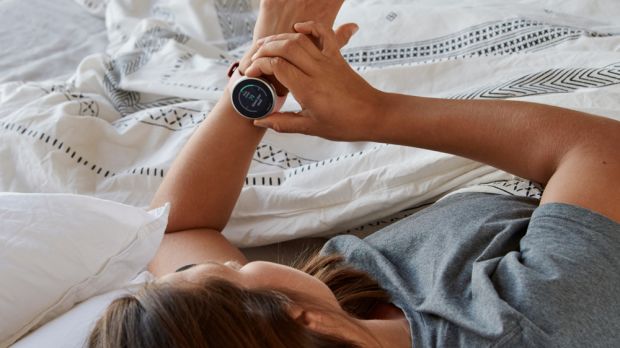
What it lacks in smarts, the V2 makes up for with its top-notch sleep tracking. The watch provides impressive detail into how your autonomic nervous system (ANS) has recovered overnight, plus stats on sleep length and continuity that lead to advice on how hard you should push yourself the day after.
I found the sleep tracking broadly accurate, although there were a couple of nights when the V2 missed when I actually fell asleep by a couple of hours. You wake up to a rating that says something like “OK” or “compromised”, depending on how well your body has recovered overnight, and can use this to decide how tough your training should be.
If you want more than a one-word description of your night there’s more detail on both your ANS recovery and general sleep stats on the watch, or open the Polar Flow app where a delightful colour-coded graph details how well you’ve slept based on six factors in three categories – time, continuity and depth. These are all rated against your own usual levels, measured over a 28-day period, which I found more relevant than a rating against a population level average.
If that all sounds like too much info, there’s also a simple sleep score out of 100.
Battery Life On The Polar Vantage V2
The V2 offers the same ultra-long battery mode that Polar introduced on the Grit X, which allows you to track an activity for 100 hours using less accurate GPS readings than you get in the full GPS mode, which lasts for 40 hours.
On paper that’s very good, but in reality I found the V2’s battery life disappointing. I had to charge it every four to five days when I was running outside most days. I’m not sure I’d trust it to get to 40 hours in an activity either: when I tested it alongside the Garmin Forerunner 745, which offers only 16 hours of GPS, I still had 30% left on the Garmin after 4½ days while the Polar required charging. It seems that the V2 drains rapidly between training sessions and loses a lot more battery overnight than other sport watches, perhaps because of the sensors used to track your sleep.
Design
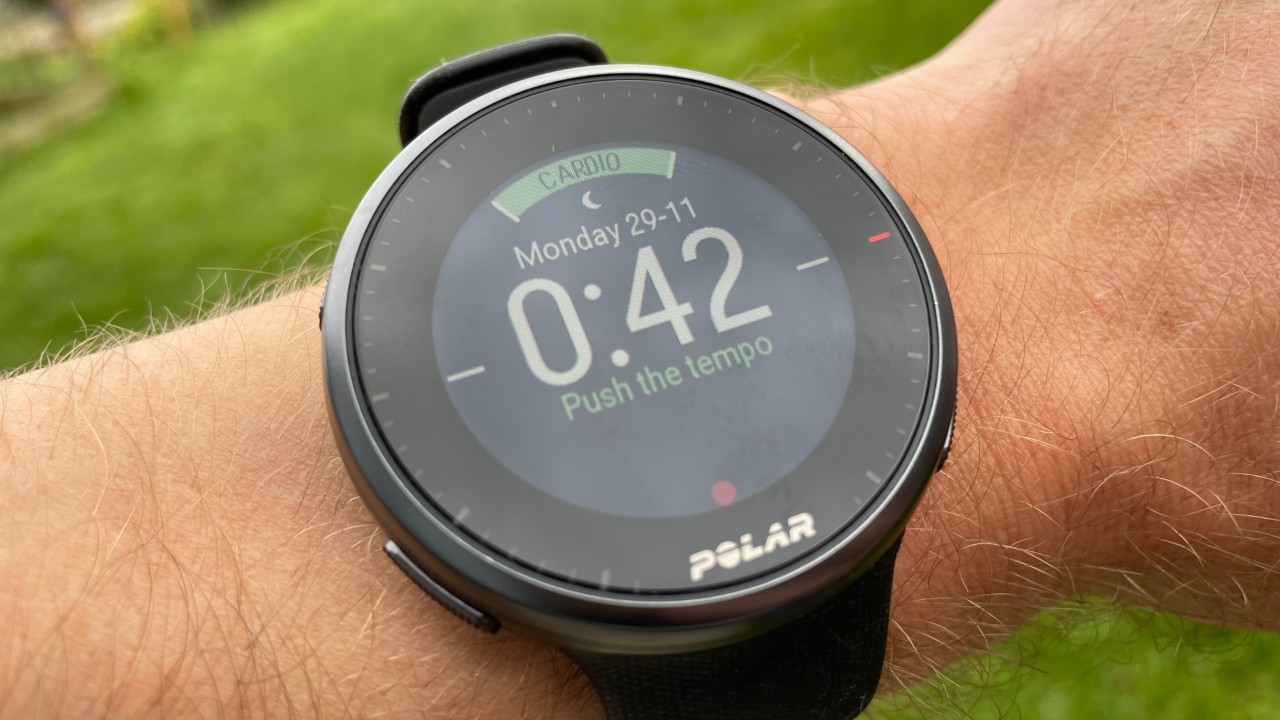
I’m a big fan of the design of the V2, which is much lighter and more svelte than the original Vantage, and I prefer the more streamlined look to the chunky, outdoorsy Grit X. While it’s clearly a plastic-strap sports watch, I think it’s smart enough to wear anywhere, and it’s comfortable to have on the wrist 24/7.

Nick Harris-Fry is a journalist who has been covering health and fitness since 2015. Nick is an avid runner, covering 70-110km a week, which gives him ample opportunity to test a wide range of running shoes and running gear. He is also the chief tester for fitness trackers and running watches, treadmills and exercise bikes, and workout headphones.
